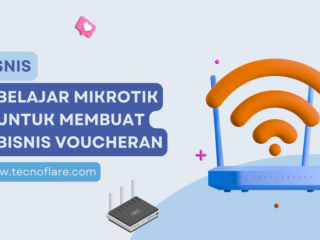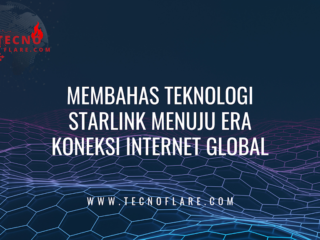The Rise of IoT: How Smart Devices are Reshaping Our Homes and Cities

Tecnoflare – In recent years, the Internet of Things (IoT) has emerged as a transformative force, reshaping not only how we interact with technology but also how we live our daily lives. Smart devices, which connect to the internet and communicate with each other, have begun to infiltrate our homes and cities, creating a more interconnected and efficient world. This article delves into the rise of IoT, exploring its impact on various aspects of our lives, from smart homes to smart cities, and the implications for the future.
Understanding the Internet of Things
The Internet of Things refers to the network of physical objects that are embedded with sensors, software, and other technologies to connect and exchange data with other devices and systems over the internet. According to a report by McKinsey & Company, the IoT has the potential to create up to $11 trillion in economic value by 2025, fundamentally altering industries and consumer behavior. This interconnectedness enables devices to gather and analyze data, leading to more informed decisions and increased efficiency.
One of the key characteristics of IoT devices is their ability to operate autonomously. For example, smart thermostats can learn a homeowner’s preferences and adjust the temperature accordingly, optimizing energy usage. As noted by Gartner, the number of connected devices is expected to reach 25 billion by 2025, indicating a rapid growth in the adoption of IoT technology. This proliferation of devices is not just limited to consumer products; it extends to industrial applications, healthcare, and urban infrastructure.
Smart Homes: The Heart of IoT
Smart homes are perhaps the most visible manifestation of the IoT revolution. Devices such as smart speakers, security cameras, and connected appliances are becoming commonplace in households around the world. These devices enhance convenience and security while providing homeowners with greater control over their living environments. The global smart home market is projected to exceed $174 billion by 2025, according to a report by Statista, highlighting the growing consumer interest in these technologies.
One of the primary advantages of smart homes is energy efficiency. Smart devices can monitor energy consumption and suggest ways to reduce waste. For instance, smart lighting systems can automatically turn off when no one is in the room, leading to significant savings on electricity bills. “The integration of smart technology in homes not only provides convenience but also contributes to sustainability efforts,” explains a report from the International Energy Agency (IEA).
Moreover, smart homes enhance security through connected surveillance systems and smart locks. Homeowners can monitor their properties remotely and receive alerts about unusual activity. As stated by the Security Industry Association, “Smart home technology has revolutionized the way we think about home security, providing users with real-time insights and control.”
The Role of IoT in Urban Development
As cities continue to grow, the challenges of urbanization become increasingly complex. IoT technology offers innovative solutions to address these challenges, leading to the development of smart cities. Smart cities leverage IoT devices to improve infrastructure, enhance public services, and increase the quality of life for residents. According to a report by the World Economic Forum, smart city initiatives can lead to significant improvements in traffic management, waste management, and energy efficiency.
Traffic congestion is a major issue in urban areas, leading to lost productivity and increased pollution. IoT-enabled traffic management systems can analyze real-time data from sensors and cameras to optimize traffic flow. For example, adaptive traffic signals can adjust their timing based on current traffic conditions, reducing congestion and emissions. “Smart traffic management systems can lead to a reduction in travel times by up to 20%,” highlights a study by the Transportation Research Board.
Furthermore, IoT technology plays a crucial role in waste management. Smart bins equipped with sensors can monitor waste levels and notify collection services when they are full, optimizing collection routes and reducing operational costs. This not only improves efficiency but also promotes sustainability by minimizing unnecessary trips and emissions.
Healthcare and IoT: A New Frontier
The healthcare sector is another area where IoT is making significant strides. Connected medical devices, wearables, and telehealth services are transforming patient care and monitoring. According to a report by the Global Market Insights, the IoT in healthcare market is expected to surpass $400 billion by 2025, driven by the increasing demand for remote patient monitoring and chronic disease management.
Wearable devices, such as fitness trackers and smartwatches, allow individuals to monitor their health metrics in real-time. This data can be shared with healthcare providers, enabling proactive management of health conditions. “The ability to monitor patients remotely can lead to early intervention and better health outcomes,” states a report from the American Medical Association.
Moreover, IoT technology enhances operational efficiency in healthcare facilities. Smart sensors can track equipment usage and monitor environmental conditions, ensuring optimal performance and compliance with health regulations. As noted by Deloitte, “IoT solutions are helping healthcare providers streamline operations and improve patient care through better data insights.”
Privacy and Security Concerns
Despite the many benefits of IoT technology, there are significant privacy and security concerns that must be addressed. As more devices become interconnected, the potential for cyberattacks and data breaches increases. A report by the Cybersecurity & Infrastructure Security Agency warns that “the proliferation of IoT devices presents new vulnerabilities that can be exploited by malicious actors.”
To mitigate these risks, manufacturers must prioritize security in the design and development of IoT devices. This includes implementing robust encryption protocols, regular software updates, and user education on best practices for device security. “Ensuring the security of IoT devices is essential to gaining consumer trust and promoting widespread adoption,” emphasizes a report from the Internet of Things Security Foundation.
Additionally, consumers must be aware of the data they share with IoT devices. Many devices collect personal information, which can be vulnerable to unauthorized access. It is crucial for users to understand privacy policies and take steps to protect their data, such as changing default passwords and disabling unnecessary features.
The Future of IoT: Opportunities and Challenges
The future of IoT holds immense potential, with opportunities for innovation and growth across various sectors. As technology continues to evolve, we can expect to see even more advanced applications of IoT, from smart agriculture to autonomous vehicles. According to a report by IDC, global spending on IoT is expected to reach $1.1 trillion by 2023, reflecting the increasing importance of this technology in the global economy.
However, the rapid growth of IoT also presents challenges that must be addressed. Issues such as interoperability between devices, standardization of protocols, and regulatory frameworks are critical for ensuring the seamless integration of IoT technologies. Collaboration between governments, industry leaders, and consumers will be essential to create a sustainable and secure IoT ecosystem.
Moreover, as IoT devices become more prevalent, the digital divide may widen, leaving some communities without access to the benefits of this technology. Efforts must be made to ensure equitable access to IoT solutions, particularly in underserved areas.
Conclusion
The rise of IoT is reshaping our homes and cities, offering unprecedented convenience, efficiency, and connectivity. As smart devices continue to proliferate, they are transforming the way we live, work, and interact with our environments. While the benefits of IoT are significant, it is essential to address the accompanying challenges, particularly in terms of security and privacy. By fostering collaboration and innovation, we can harness the full potential of IoT to create a smarter, more connected world.
FAQ
Q: What is the Internet of Things (IoT)?
A: The Internet of Things (IoT) refers to the network of physical objects embedded with sensors and software that connect and exchange data over the internet, enabling devices to communicate and operate autonomously.
Q: How do smart homes benefit homeowners?
A: Smart homes provide enhanced convenience, energy efficiency, and security. Devices can automate tasks, monitor energy usage, and offer remote access to home security systems, improving overall quality of life.
Q: What are smart cities?
A: Smart cities leverage IoT technology to improve urban infrastructure, enhance public services, and increase the quality of life for residents. This includes applications in traffic management, waste management, and energy efficiency.
Q: What are the security concerns associated with IoT devices?
A: IoT devices can be vulnerable to cyberattacks and data breaches. It is essential for manufacturers to implement robust security measures and for consumers to be aware of privacy policies and data protection practices.
References
- McKinsey & Company. (2020). The Internet of Things: Mapping the value beyond the hype.
- Gartner. (2021). Forecast: Internet of Things, Worldwide, 2019-2025.
- Statista. (2021). Smart Home Market Size Worldwide from 2018 to 2025.
- International Energy Agency (IEA). (2020). Energy Efficiency 2020.
- Security Industry Association. (2021). The Impact of Smart Technology on Home Security.
- Transportation Research Board. (2020). Smart Traffic Management Systems: A Review of Current Practices.
- Global Market Insights. (2021). IoT in Healthcare Market Size.
- American Medical Association. (2021). The Role of Telehealth in Healthcare Delivery.
- Cybersecurity & Infrastructure Security Agency. (2021). Cybersecurity for IoT Devices.
- Internet of Things Security Foundation. (2020). IoT Security Compliance Framework.
- IDC. (2021). Worldwide IoT Spending Guide. (*)









No Comments